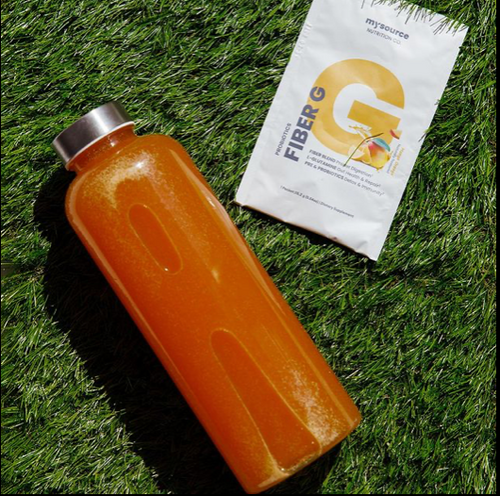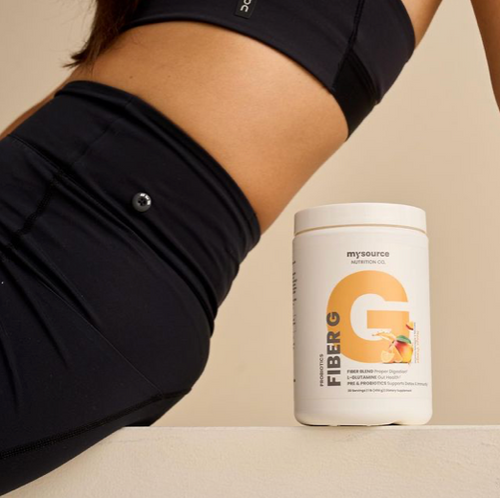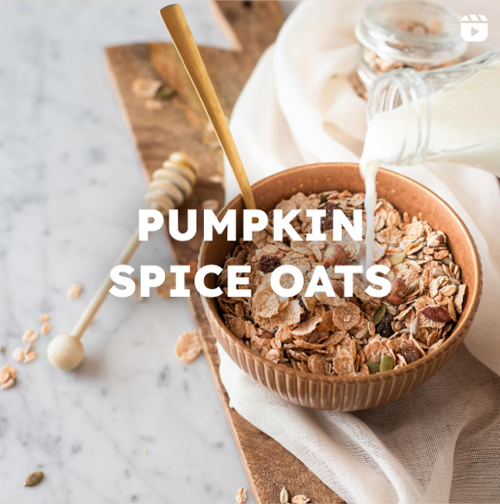Gluten is a group of proteins found in certain grains, such as wheat, rye, and barley.It helps food maintain its shape by providing elasticity and moisture. It also allows bread to rise and provides a chewy texture.
Although gluten is safe for most people, those with conditions like celiac disease or gluten sensitivity should avoid it to prevent adverse health effects.
Many foods are made with gluten-containing ingredients, so it’s important that those who are unable to consume it check ingredient labels closely.
Here is a list of 50 gluten-free foods.
Fruits & Vegetables
All fresh fruits and vegetables are naturally gluten-free. However, some processed fruits and vegetables may contain gluten, which is sometimes added for flavoring or as a thickener (
Gluten-containing ingredients that may be added to processed fruits and vegetables include hydrolyzed wheat protein, modified food starch, malt, and maltodextrin.

Top 10 Gluten-Free Fruits & Vegetables
#1 Citrus Fruits, including Oranges & Grapefruit: excellent source of immune-boosting vitamin c, dietary fiber, potassium and are very hydrating.
#2 Bananas: great source of potassium and other vitamins, including vitamin a, vitamin c and b6. Great simple carbohydrate source pre-workout or post-workout for recovery and glycogen replenishment.
#3 Apples: an incredibly nutritious fruit that offers multiple health benefits. They're rich in fiber and antioxidants. Eating them is linked to a lower risk of many chronic conditions, including diabetes, heart disease, and cancer.
#4 Berries: these sweet, heart-shaped fruits are full of vitamin C, folic acid, fiber, and antioxidants. They may help lower high blood pressure and cholesterol, help you manage blood sugar, and fight the effects of aging on your brain.
#5 Peaches: Peaches are rich in many vitamins, minerals, and beneficial plant compounds.
#6 Cruciferous Vegetables, including Cauliflower & Broccoli: most cruciferous vegetables are rich in vitamins and minerals such as folate and vitamin K. Dark green cruciferous veggies also are a source of vitamins A and C and contain phytonutrients
#7 Greens, including Spinach, Kale, Swiss Chard: While kale offers more than twice the amount of vitamin C as spinach, spinach provides more folate and vitamins A and K. Both are linked to improved heart health, increased weight loss, and protection against disease.
#8 Starchy Vegetables, including Peas, Corn and Potatoes: starchy vegetables are a good source of vitamin C, B vitamins and potassium.
#9 Bell Peppers, Carrots: are rich in many vitamins and antioxidants, especially vitamin C and various carotenoids. For this reason, they may have several health benefits, such as improved eye health and reduced risk of several chronic diseases.
#10 Mushrooms: are a rich, low calorie source of fiber, protein, and antioxidants. They're also great sources of: Selenium.
Grains
A select few whole grains contain gluten, while the rest are naturally gluten-free.
It’s important to check food labels when purchasing whole grains. Even gluten-free whole grains can be contaminated with gluten, especially if they are processed in the same facility as gluten-containing foods (
For example, oats are often processed in facilities that also process wheat, which can lead to cross-contamination. For this reason, you should confirm that the oats you purchase are certified gluten-free.

Top 10 Gluten-Free Grains
#1 Quinoa: a herbaceous annual plant grown as a crop primarily for its edible seeds; the seeds are rich in protein, dietary fiber, B vitamins, and dietary minerals in amounts greater than in many grains.
#2 Brown Rice: Many of the nutrients in brown rice help keep your heart healthy. It's a rich source of dietary fiber and contains high levels of magnesium.
#3 Wild Rice: Research has shown that wild rice has powerful antioxidant and lipid-lowering properties. It's also a rich source of dietary fiber and a good source of Alpha Lipoic Acid (ALA).
#4 Buckwheat: Buckwheat is a highly nutritious whole grain that many people consider to be a superfood. It is a great source of fiber, protein and minerals.
#5 Sorghum: a nutrient-packed grain that you can use in many ways. It's rich in vitamins and minerals like B vitamins, magnesium, potassium, phosphorus, iron, and zinc. It's also an excellent source of fiber, antioxidants, and protein.
#6 Tapioca: The minerals in tapioca can provide important health benefits. It is high in calcium and iron. It is low in fiber and fat and therefore easy to digest for those who are suffering from bloating or other digestive related issues.
#7 Millet: This grain is rich in dietary fiber, both soluble and insoluble. The insoluble fiber in millet is known as a “prebiotic,” which means it supports good bacteria in your digestive system.
#8 Amaranth: The nutrients in amaranth can offer significant health benefits as a part of a healthy diet. It's a source of vitamin C, which is vital to the body's healing process because it helps process iron, form blood vessels, repair muscle tissue, and maintain collagen.
#9 Gluten-Free Oats: Oats are among the healthiest grains on earth. They're a gluten-free whole grain and a great source of important vitamins, minerals, fiber, and antioxidants.
#10 Teff: Still, compared with other grains, teff is a good source of copper, magnesium, potassium, phosphorus, manganese, zinc, and selenium. It is easy to digest and a good source of protein.
Nuts, Seeds & Fat Sources
Fats and oils are naturally gluten-free. In some cases, additives that contain gluten may be mixed with fats and oils for flavor and thickening.

Top 10 Gluten-Free Fat Sources
#1 Legumes, such as Beans, Lentils, Peas, Peanuts:
Beans and legumes contain antioxidants that help prevent cell damage and fight disease and aging. The fiber and other nutrients benefit the digestive system, and may even help to prevent digestive cancers.
#2 All Nuts & Seeds: Nuts and seeds are high in calories and fat. But when eaten in moderate amounts, they provide a big health boost. Both contain mono- and polyunsaturated fats and omega-3 fatty acids that reduce the risk of cardiovascular disease and other illnesses.
#3 Ghee: Though ghee is rich in fat, it contains high concentrations of monounsaturated Omega-3s. These healthful fatty acids support a healthy heart and cardiovascular system.
#4 Avocado & Avocado Oil: Avocados are an excellent source of monounsaturated fat and vitamin E, and are a good source of folate. They also supply more soluble fibre than other fruit and contain a number of useful minerals including iron, copper and potassium.
#5 Olives & Olive Oil: Olives are very high in vitamin E and other powerful antioxidants. Studies show that they are good for the heart and may protect against osteoporosis and cancer.
#6 Coconut Oil: Coconut oil has many nutrients that can contribute to your health and to a good diet. It's full of fatty acids that your body needs and may help improve cognitive function, metabolism, and hair and skin health.
#7 Butter: It's rich in nutrients like bone-building calcium and contains compounds linked to lower chances of obesity. Butter can also be part of a low-carbohydrate diet or keto diet.
#8 Cheese: is a great source of calcium, fat, and protein. It also contains high amounts of vitamins A and B12, along with zinc, phosphorus, and riboflavin.
#9 Cream: As a dairy product, fresh cream contains a significant amount of Vitamin B2, which encourages good health in the body. Meaning, it supports the growth of tissues and their development.
#10 Milk: It provides potassium, B12, calcium and vitamin D, which are lacking in many diets. Milk is also a good source of vitamin A, magnesium, zinc and thiamine (B1).
Protein Sources
Many foods contain protein, including animal and plant-based sources. Most are naturally gluten-free (
However, gluten-containing ingredients, such as soy sauce, flour, and malt vinegar are often used as fillers or flavorings. They may be added to sauces, rubs, and marinades that are commonly paired with protein sources.

Top 10 Gluten-Free Protein Sources
#1 Poultry (Chicken Breast, Turkey): A food rich in protein, chicken can help with weight management and reduce the risk of heart disease. Chicken contains the amino acid tryptophan, which has been linked to higher levels of serotonin (the “feel good” hormone) in our brains.
#2 Red Meat (Fresh Beef, Pork, Lamb, Bison): The heme iron in red meat is easily absorbed by the body. Red meat also supplies vitamin B12, which helps make DNA and keeps nerve and red blood cells healthy, and zinc, which keeps the immune system working properly.
#3 Seafood (Fresh Fish, Shellfish, Scallops): Seafood's magic ingredient: omega-3 fatty acids. Fatty fish, like salmon (fresh and canned), tuna (fresh and canned), herring, trout, mackerel and sardines, are loaded with these beneficial fats.
#4 Traditional soy products (Tofu, Tempeh, Edamame): Soybeans and soy foods may reduce the risk of a range of health problems, including cardiovascular disease, stroke, coronary heart disease (CHD), some cancers as well as improving bone health.
#5 Eggs: Eggs contain a range of vitamins and minerals including vitamin A, vitamin E and selenium which all act as important antioxidants in supporting eye health, retina function and helping counteract degenerative vision as you age.
#6 Cottage Cheese: Cottage cheese is an excellent source of calcium, a mineral that plays a major role in tooth and bone health, and in the prevention of osteoporosis.
#7 Greek Yogurt: Greek yogurt is an excellent source of calcium, which can help improve bone health. It also contains probiotics, which support a healthy bacterial balance in the gut.
#8 Legumes: Beans and legumes contain antioxidants that help prevent cell damage and fight disease and aging. The fiber and other nutrients benefit the digestive system, and may even help to prevent digestive cancers.
#9 Seeds: Seeds are great sources of fiber. They also contain healthy monounsaturated fats, polyunsaturated fats and many important vitamins, minerals and antioxidants. When consumed as part of a healthy diet, seeds can help reduce blood sugar, cholesterol and blood pressure.
#10 Plant-Based Protein Powder: In addition to providing the building blocks for healthy muscles and tissues, plant protein may also be beneficial for weight loss. Plant-based proteins tend to be lower in calories and fat than animal proteins but higher in fiber and essential nutrients.
Tag & Follow us
- @mysourcenutrition
- #FiberG #GlutenFree#GutHealth
Welcome to MySource Nutrition
We are happy to welcome you to our community. Say goodbye to occasional constipation, bloating, sugar cravings and other gut related issues with MySource's Fiber G.







